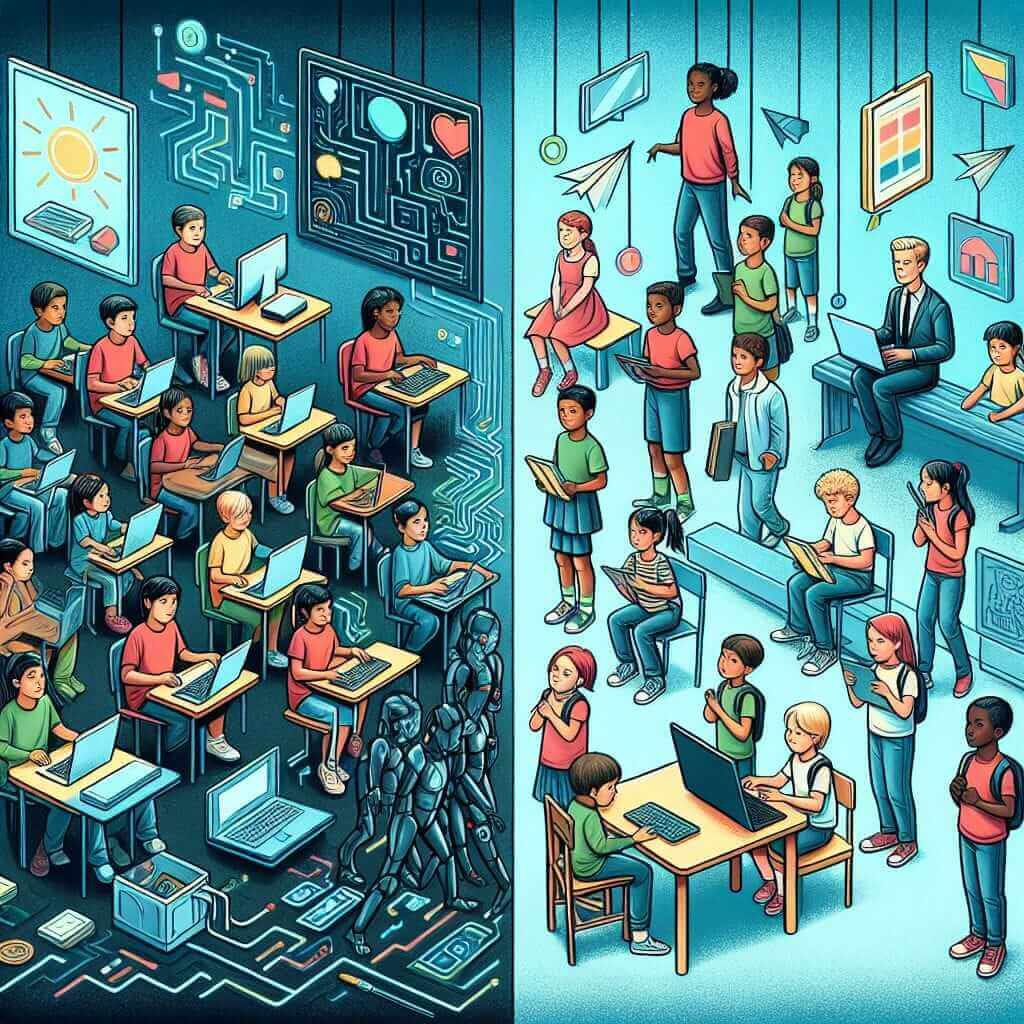The intersection of “educational access” and “digital transformation” is increasingly relevant in today’s technology-driven world. This topic frequently appears in IELTS Writing Task 2, prompting test-takers to analyze the implications of technology on education. Considering the escalating reliance on digital platforms for learning, understanding this theme is crucial for IELTS success. This essay will delve into a pertinent IELTS task 2 question, provide a band-high sample response, and offer valuable vocabulary and insights for crafting a compelling essay.
Sample IELTS Writing Task 2 Question
The digital revolution has significantly impacted educational access. While some believe it has created unprecedented opportunities, others argue it has exacerbated existing inequalities. Discuss both views and give your own opinion.
Analysis of the Question
This question presents a classic “discuss both views and give your opinion” structure. It requires a balanced analysis of the advantages and disadvantages of digital transformation in education, culminating in a clear personal stance.
Sample Essay
The pervasive impact of the digital revolution on education has ignited a debate about its effects on access. While some contend that it has democratized learning opportunities, others argue that it has amplified existing disparities. This essay will examine both perspectives before presenting my own viewpoint.
Proponents of digital transformation in education highlight its unparalleled reach. The internet has dismantled geographical barriers, enabling students in remote areas to access high-quality learning materials and connect with educators worldwide. Online courses and platforms like Coursera and edX epitomize this shift, offering a plethora of subjects at learners’ fingertips. This accessibility has fostered educational empowerment, particularly for those traditionally excluded from formal learning avenues.
However, critics posit that this digital shift has exacerbated existing inequalities. The digital divide, characterized by unequal access to technology and digital literacy skills, poses a significant challenge. Students from underprivileged backgrounds often lack reliable internet access, appropriate devices, or the necessary technological aptitude to thrive in a digital learning environment. This exacerbates the gap between the digitally equipped and the digitally disadvantaged, potentially perpetuating social inequalities.

In my view, while digital transformation holds immense potential to democratize education, it is crucial to address the challenges that hinder equitable access. Governments and educational institutions must prioritize bridging the digital divide by investing in infrastructure, providing affordable devices and internet access, and promoting digital literacy programs. By doing so, we can harness the transformative power of technology to create a more inclusive and equitable education system for all.
(Word count: 280 words)
Notes on Vocabulary, Grammar, and Structure
- Vocabulary:
- Employ synonyms to avoid repetition: “impact,” “effects,” “influence.”
- Use academic vocabulary: “pervasive,” “democratized,” “exacerbated,” “unprecedented,” “proponents,” “posit,” “digital divide,” “thrive,” “underprivileged,” “perpetuating.”
- Grammar:
- Use a variety of sentence structures: simple, compound, and complex.
- Pay attention to subject-verb agreement and tense consistency.
- Structure:
- Follow a clear structure: Introduction, Body Paragraph 1 (Advantages), Body Paragraph 2 (Disadvantages), Conclusion (Your Opinion).
- Use cohesive devices to link ideas: “while,” “however,” “in addition,” “furthermore.”
Key Vocabulary
- Democratized (verb): Made something accessible to everyone.
- Exacerbated (verb): Made a problem, bad situation, or negative feeling worse.
- Unprecedented (adjective): Never done or known before.
- Proponents (noun): People who speak publicly in support of a particular idea or plan of action.
- Posit (verb): To suggest something as a basic fact or principle from which a further idea is formed or developed.
- Digital Divide (noun): The gulf between those who have ready access to computers and the internet and those who do not.
- Thrive (verb): To grow or develop successfully.
- Underprivileged (adjective): Not having the advantages that most people have.
- Perpetuating (verb): Making something continue indefinitely.
Conclusion
The intersection of digital transformation and educational access is a multifaceted issue with far-reaching consequences. To effectively address this topic in IELTS Writing Task 2, a balanced analysis of both sides of the argument is essential. By using precise vocabulary, varied sentence structures, and a clear, coherent structure, test-takers can confidently articulate their understanding of this complex issue. Future essay prompts might focus on the specific technologies driving educational change or the ethical considerations surrounding data privacy and accessibility in a digitally driven educational landscape.